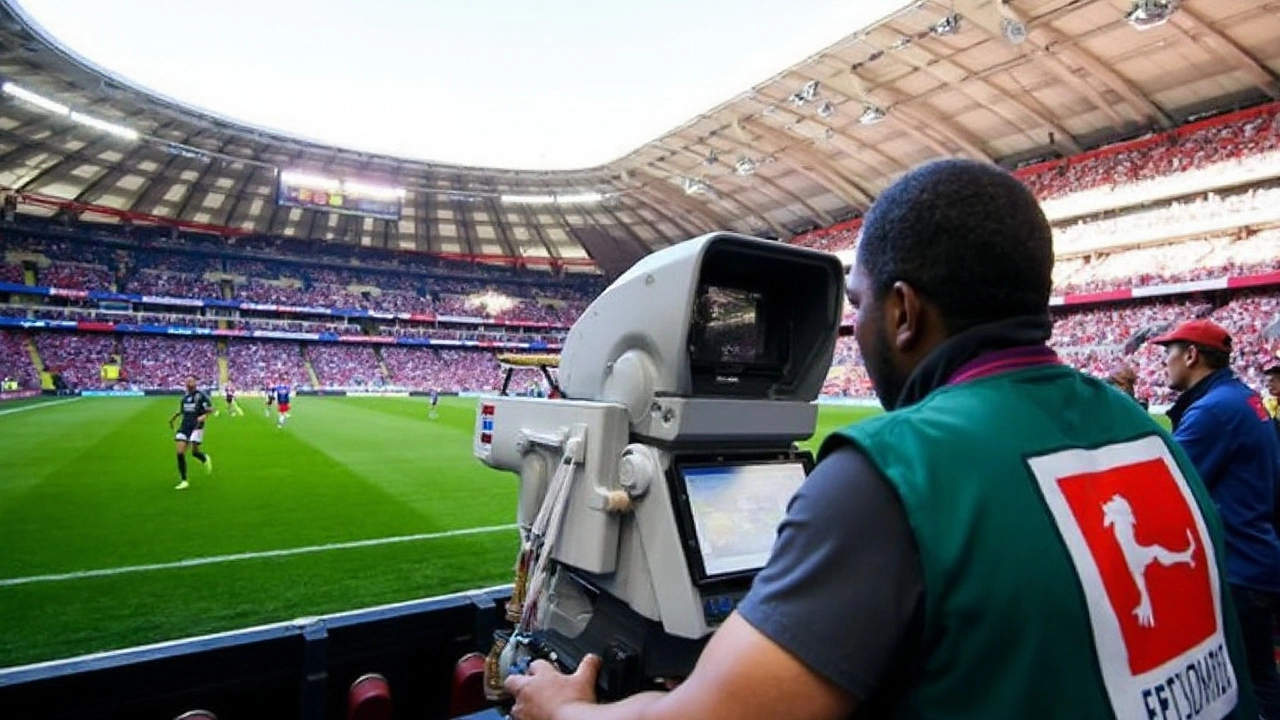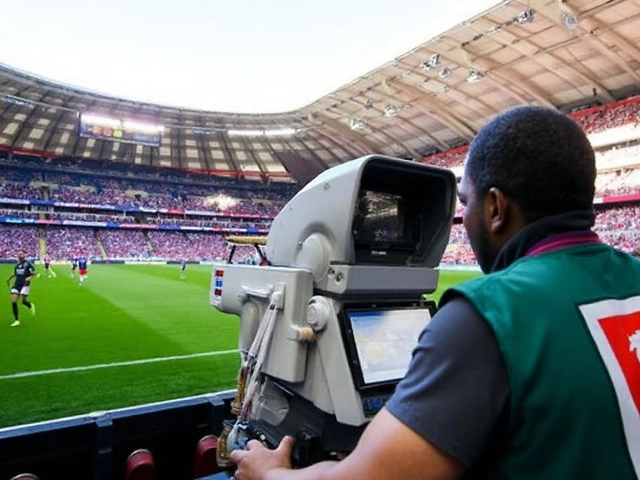A coordinated raid ends the largest illegal live-sports hub
A week before the new NFL season, an anti-piracy coalition and Egyptian authorities pulled the plug on what they call the world’s biggest illegal live-sports platform. The target was Streameast, a sprawling operation that racked up more than 1.6 billion visits over the past year across 80 related domains. The timing wasn’t accidental—cutting off the taps before kickoff was the point.
The takedown followed a year-long investigation and a Sunday raid on August 24 that resulted in two arrests in Egypt. Investigators say they seized three laptops, four smartphones, $123,000 in Visa cards, and roughly $200,000 in cryptocurrency wallets. The haul reads like a ledger of a modern piracy business: mobile devices for ops on the move, laptops for administration, and digital wallets for revenue that never touches a bank.
The operation was led by Egypt’s law enforcement working with the Alliance for Creativity and Entertainment (ACE), a coalition backed by 50 companies across streaming, studios, and media. ACE’s membership spans the biggest names in entertainment—firms behind many of the sports rights that pirates chase. The group’s pitch is simple: coordinate intelligence and legal muscle to pressure hosts, registrars, and operators all at once. Streameast became the latest—and largest—example of that playbook.
For years, viewers found Streameast through search engines, social platforms, and word of mouth, then bounced between mirror domains when addresses got blocked. At its peak, the site averaged around 136 million visits a month, according to traffic analysis shared with investigators. Its audience clustered in the United States, Canada, Britain, the Philippines, and Germany, mirroring where sports rights and fandom are strongest and where time zones make live streams convenient.
What drew so many? Live access to the most coveted events. The platform aggregated links to illegal streams covering the NFL, NBA, MLB, the Premier League, and the UEFA Champions League, plus Formula 1, major MMA cards, and boxing nights. On any given weekend, a single page could act as a switchboard for dozens of live games. For fans unwilling or unable to pay for multiple subscriptions, the simplicity was the sell.
Behind that convenience sat a criminal business. Traffic at that scale fuels a robust advertising market, often through shady ad networks that look the other way. Pop-ups, deceptive buttons, and fake software updates aren’t quirks—they’re revenue streams. Security researchers have repeatedly warned that sports piracy portals carry a higher risk of malware and credential theft than legitimate services. The crypto haul underscored another piece of the model: untraceable payment rails help operators and affiliates hide profits.
ACE framed the shutdown as a watershed. Charles Rivkin, who chairs ACE and runs the Motion Picture Association, said the action marked the coalition’s most decisive strike against illegal live-sports streaming, adding that it strengthens the hand of leagues, rights holders, and—crucially—fans who want reliable, lawful access. The message was aimed at two audiences: pirates running similar schemes and viewers who treat buffering feeds and sketchy pop-ups as the cost of watching for free.
Ed McCarthy, chief operating officer of Done, an ACE member focused on live sports, put it bluntly: this operation was bleeding value from every level of the sports ecosystem. Broadcasters and streamers pay billions for licensing; teams rely on that money for salaries and development; grassroots programs feel the squeeze when the top of the funnel leaks. When piracy erodes those revenues, the whole pyramid wobbles.
After the raid, all known Streameast domains were redirected to a page run by ACE that lists legal streaming options. The quick flip of those addresses wasn’t just a legal victory; it was a search-engine strategy. By capturing the domain footprint and pointing it to legitimate offerings, ACE tries to change user behavior at the moment of intent. You type a familiar URL, and instead of a live stream, you get a map to the lawful route.
This isn’t a one-and-done fight. Within hours of the shutdown, copycats and lookalikes began circulating on forums and social channels, some claiming to be the new official home, others impersonating Streameast to capitalize on the traffic spike. Investigators say they anticipated this. The plan now is triage: monitor DNS registrations, flag suspicious spikes in traffic, and work down the chain—registrars, hosts, CDNs—to deny clones the infrastructure they need.
Why does this matter so much now? Sports is the backbone of live TV and a centerpiece of the streaming wars. NFL media rights alone run into the tens of billions over their current deals. European soccer packages reshape entire schedules and business strategies. F1’s surge in global popularity has brought new bidding cycles and higher stakes. In that context, a free portal drawing an audience larger than many national broadcasters is a material threat.
Streameast’s strength was also its weakness: scale. Eighty associated domains gave the site resilience against takedowns and ISP blocks, but they also left a lot of fingerprints—WHOIS records, infrastructure overlaps, analytics IDs, code reuse. Anti-piracy teams look for those seams. Match three or four fragments across enough domains, and you can stitch together the operation behind the curtain.
The August 24 raid capped months of that work, much of it invisible: preservation of evidence, court orders to unmask accounts, requests to payment providers, and quiet talks with infrastructure companies. When investigators are ready, speed matters. You want phones, laptops, and wallets seized before operators can wipe them. You want domains in friendly hands before they’re transferred. And you want it all to happen close to a tentpole event—like the first weekend of the NFL—when disruption hurts most.
Viewers who used Streameast may shrug and hunt for the next link. But there are real risks on that path. Fake Stream East pages can prompt software downloads that hijack devices. Pop-under ads can trick you into sharing credentials. And “free” comes with a hidden price: data harvested by opaque ad-tech tools and resold into a market you can’t see. The better move is to check legitimate providers in your region or short-term passes that cover a tournament or a team instead of buying a full season.
For rights holders, the Streameast case will be studied for months. Three tactics stand out. First, the cross-border partnership—local authorities plus a global coalition—cut through jurisdictional headaches. Second, rapid domain re-routing helped retrain user behavior rather than just leaving a dead end. Third, seizing crypto wallets signaled that no part of the money trail is off-limits anymore.
There’s a policy angle too. Countries have taken different approaches to live-sports piracy, from court-ordered “dynamic blocking” during matches to criminal penalties for operators and sellers of illicit streams. The Streameast takedown leans on a separate strength: investigative pressure that targets the brains and the bank accounts, not just the pipes. Expect more of that as coalitions refine their methods.
What happens to the two suspects arrested in Egypt will depend on local law and any cross-border legal requests that follow. Prosecutors typically look for evidence of willful infringement at scale: domain control, server access, ad contracts, crypto transfers, and communications showing knowledge of illegal sourcing. Even if trials take time, the immediate impact—shuttering the network and redirecting users—delivers what rights holders wanted most.
For fans wondering what changed, the answer is reach. On big weekends, Streameast’s audience was comparable to mid-tier cable networks in the U.S.—without paying for the games. That’s why leagues and streamers invested in this case; even a small percentage of that crowd moving to legal options can shift the math. If you suddenly can’t find a link on Sunday, that’s by design.
Here’s what authorities say they accomplished in the raid and its aftermath:
- Dismantled an 80-domain network tied to one piracy brand
- Arrested two men in Egypt on suspicion of large-scale copyright infringement
- Seized devices and assets, including laptops, smartphones, $123,000 in Visa cards, and about $200,000 in crypto
- Redirected former Streameast domains to a page listing legitimate streaming options
- Launched ongoing monitoring to target copycat sites trying to fill the gap
The fallout will ripple through Telegram channels, subreddit clones, and link farms where sports streams circulate every weekend. Some mirrors will pop up. Some will fade fast under legal pressure. And some users will decide it’s not worth the hassle. That’s the quiet goal: make piracy less reliable than the sanctioned path.
ACE isn’t promising the internet will clean up overnight. Piracy adapts. But this is a high-profile win at a moment when live sports drive subscriber growth and justify higher ad rates. By acting before the NFL’s opening week, investigators aimed at the biggest target they could hit. For the first time in years, a lot of fans who expected a free window might be staring at a dead one—and rethinking where to watch on Sunday.
What the takedown means for leagues, fans, and the piracy economy
Leagues see momentum. If Streameast can fall, smaller networks are more exposed. Broadcasters and streamers will use this case to push for faster cooperation from registrars, hosts, and ad networks. And they’ll point to a clear pattern: the bigger the illegal audience, the easier it is to justify resource-intensive investigations that lead to hardware seizures and arrests, not just domain suspensions.
Fans get a different lesson: the free option isn’t just risky; it’s unstable. If your Sunday routine depends on a single site, you’re one raid away from blackouts and scams. Regional rights can be messy, but legal services now package monthly, weekly, and event-based passes that track how many people actually watch. That data supports the next round of rights deals and, ideally, more flexible pricing.
As for the piracy economy, the Streameast seizure hits two pressure points: trust and cash. Trust takes a hit when a dominant brand goes dark and imitators scramble to fill the hole. Cash gets squeezed when crypto wallets are locked and ad brokers are warned off domains on enforcement lists. In a business where speed and scale are everything, losing both can be fatal.
ACE and Egyptian authorities say their work isn’t finished. Investigations are expanding to identify associates, infrastructure providers, and revenue partners tied to the seized domains. For now, the headline stands: the largest illegal live-sports streaming site has been taken offline on the eve of a season that defines the TV calendar. The message to operators is loud. The message to viewers is clear. And the clock—for both—just reset.


